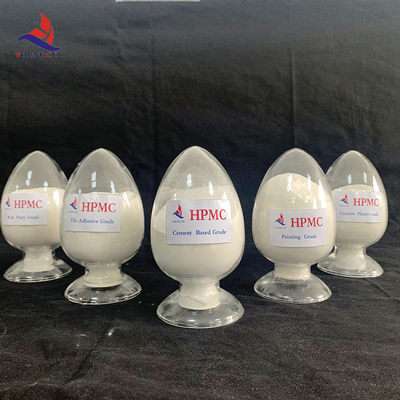Constructing HPMC A Comprehensive Overview
Hydroxypropyl methylcellulose (HPMC) is a versatile and widely used polymer in various industries, particularly in pharmaceuticals, food, and construction. It is a semi-synthetic derivative of cellulose, created through a series of chemical processes that modify natural cellulose to enhance its properties. This article aims to provide a detailed overview of HPMC, including its chemical structure, production process, applications, and benefits.
Chemical Structure and Properties
HPMC is characterized by its molecular structure, which consists of hydroxyl (OH) and methoxy (OCH3) functional groups attached to a cellulose backbone. The degree of substitution of hydroxyl and methoxy groups affects the solubility, viscosity, and gelling properties of HPMC. These properties can be tailored by adjusting the ratio of hydroxypropyl to methyl groups during synthesis, making HPMC highly adaptable for various applications.
One of the key features of HPMC is its ability to form gels and emulsions, which is critical in the formulation of various products. It is soluble in both hot and cold water, depending on its specific formulation, allowing for diverse usage scenarios. HPMC also exhibits excellent film-forming abilities, providing a barrier against moisture, and enhancing product stability.
Production Process
The production of HPMC involves several key steps. Initially, cellulose is extracted from plant materials, commonly wood or cotton. The raw cellulose is then treated with alkali, followed by etherification with propylene oxide and methyl chloride. This process results in the desired level of substitution, yielding HPMC of various grades that differ in viscosity and solubility.
Quality control during the production process is crucial, as it ensures that the HPMC meets the required standards for purity and performance. Advanced analytical techniques, including nuclear magnetic resonance (NMR) and high-performance liquid chromatography (HPLC), are often employed to assess the quality of the final product.
construct hpmc

Applications
HPMC finds a wide range of applications across multiple sectors. In the pharmaceutical industry, it serves as an excipient in tablet formulations, offering controlled release properties and improving the bioavailability of active ingredients. Its thickening and binding properties make it a preferred choice for many drug formulations.
In the food industry, HPMC is utilized as a thickener, stabilizer, and emulsifier. It improves the texture and mouthfeel of food products while also extending shelf life. Additionally, its use in gluten-free formulations has gained popularity, as it helps mimic the elasticity of gluten.
In construction, HPMC is added to cement-based products to enhance workability and water retention. It improves the adhesion of mortar and plaster, providing better durability and performance in construction applications.
Benefits of HPMC
The advantages of using HPMC are manifold. It is considered safe for consumption and is non-toxic, making it suitable for food and pharmaceutical products. Its versatility allows for customization to meet specific application requirements, and its compatibility with various additives enhances its functionality.
In conclusion, HPMC is a crucial polymer with diverse applications across several industries. Its unique properties and adaptability make it an essential component in many formulations, contributing to improved product performance and customer satisfaction. As research and technology continue to advance, the scope of HPMC's applications is expected to expand further, solidifying its place as a vital material in modern manufacturing.
-
Rdp Powder: Key Considerations for Wholesalers in the Building Materials IndustryNewsJul.08,2025
-
Key Considerations for Wholesalers: Navigating the World of Hpmc - Based ProductsNewsJul.08,2025
-
Hpmc Detergent: Key Considerations for WholesalersNewsJul.08,2025
-
Key Considerations for Wholesalers: China Hpmc For Tile Adhesive, Coating Additives, Concrete Additives, and MoreNewsJul.08,2025
-
Crucial Considerations for Wholesalers: Navigating the World of Construction MaterialsNewsJul.08,2025
-
Key Considerations for Wholesalers Sourcing Additive For Cement, Additive For Concrete, Additive For Putty from Additive Manufacturer Shijiazhuang Gaocheng District Yongfeng Cellulose Co., Ltd.NewsJul.08,2025




